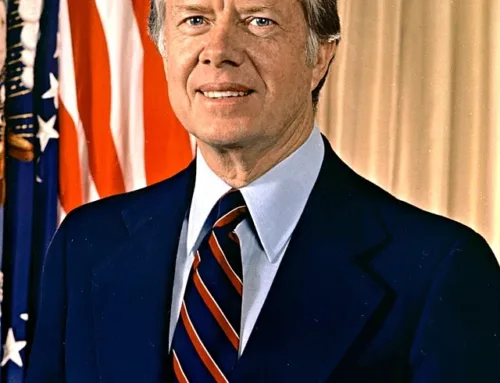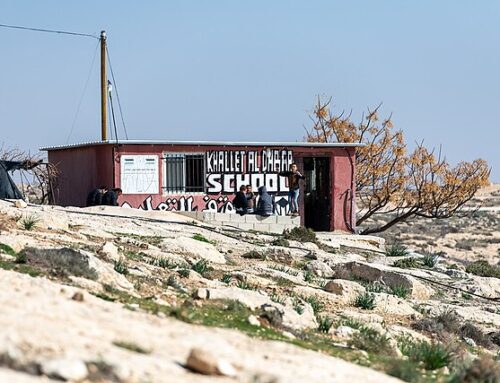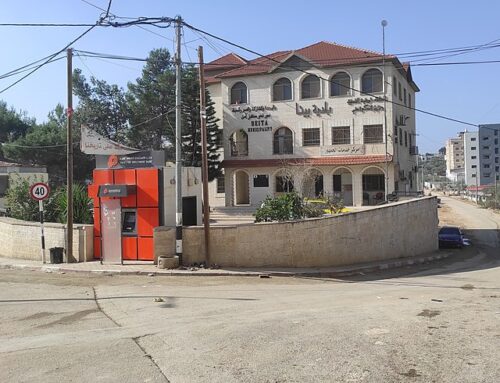I am one of a number of writers who contributed to an analysis of the evolution and current status of Israel’s trade union federation, the Histadrut, published in print and online by the Jewish Labor Committee. Among other issues, it touches upon the Histadrut’s eventual inclusion of Israeli-Arab workers in its ranks, and its relations with Palestinian trade unions. What follows is a brief version drawn from that material, plus a section entitled “Left-wing Critics of the Histadrut,” which was not included in the JLC piece:
In December 1920, the Histadrut trade union federation was established to organize the economic activities of Jewish workers living in Palestine. Its key mission at the time, providing immigrants with work, was not typical for trade unions. The Histadrut became the Palestine Mandate’s largest employer and generator of economic activity.
After the birth of the State of Israel in 1948, the Histadrut remained a major employer, controlling at one point around a third of the economy and employing over three-quarters of its workers (featured above is a vintage Israeli government photo of a May Day celebration). Furthermore, the Histadrut was the largest provider of health services to Israelis through the Kupat Holim Clalit (“General Sick Fund”), a comprehensive health care network, which artificially inflated union membership.
The Histadrut’s strength began to erode in 1985, when the holding company, Koor, was sold to foreign investors. This was followed ten years later with a reform of the national health care system, precipitating a two-thirds decline in Histadrut membership over the next ten years. Yet today, despite the diminished role and size of the Histadrut, it remains a powerful force in Israeli society and the nation’s economy.
The surprise announcement in November 2013 that Ofer Eini was resigning after nine years in office as the Histadrut’s chairperson provided a convenient opportunity for the news media to assess the status of Israeli trade unionism in the past decade and currently. The Jerusalem Post reported that Eini “managed to stem the decline in union membership and even moderately offset it, after convincing workers in the cellphone and hi-tech industries to unionize. . . . Since the 2008 meltdown on Wall Street, . . . some 40,000 new members have joined the Histadrut.”
Other gains engineered under Eini’s leadership included “a deal for mandatory pension deductions by all employers for all employees,” an increase in the national minimum wage, and getting “the public sector to formally and fully hire the guards and cleaning personnel who were previously hired as contract workers with no rights and benefits.”
Left-wing Critics of the Histadrut
Left-wing criticisms of the Histadrut include the view that it favors the interests of the largest unions (e.g., the dock workers and the teachers) at the expense of smaller unions and the unorganized. The current head of the Meretz party, Zehava Gal-On, is among these critics.
There are two labor organizations that currently compete with the Histadrut to represent Israel’s workers. Decrying a decline in the ranks of organized workers during three decades of “neo-liberal” policies, Koach La Ovdim (Power to the Workers) was founded in 2007. In its own words:
[It] has rejuvenated the field of organized labor by working to unionize subcontracted workers; presenting a participatory model for organized labor; and bringing about the formation of workers’ committees which foster cooperation between different types of communities. As of October 2013, Koach La Ovdim numbered more than 13,000 members representing 20,000 workers.
There is also a “Workers’ Advice Center” (Ma’an) associated with the Da’am Workers Party, headed by an Israeli-Arab woman, Asma Agbarieh. Da’am began as a 1995 split-off from the Maki Communist party; it emphasizes class solidarity over ethnic and national allegiances. It has drawn activists and votes from both Jews and Arabs in Israel, but has never succeeded in reaching the threshold necessary to elect candidates to the Knesset; it garnered 3374 votes in 2013, but did not contest the 2015 election.
P.S. To read or printout the Jewish Labor Committee pamphlet, click on its title: “The Israeli Labor Movement: Focus on the Histadrut.”






Leave A Comment